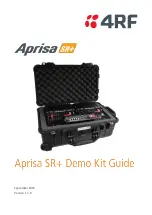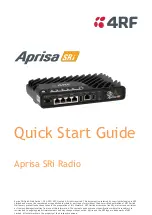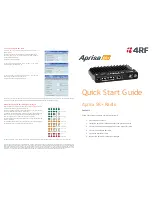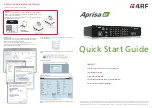
Transmitter Power Amplifier (PA) 5-25W
Introduction/Theory of Operation
3.1-27
12.1
Power Controlled Stage
The first stage (Q3511) amplifies the RF signal from the VCO (line EXCITER PA) and controls the
output power of the PA. The output power of the transistor Q3511 is proportional to its collector
current which is adjusted by a voltage controlled current source consisting of Q3641, (Q3643-T3
only) and Q3642. The current of the whole stage is drawn from the RX-TX Switch through coil
L3652.
Transistor Q3643 (not in all models), controlled by the microprocessor via signal K9V1, switches the
current source on in transmit mode and off in receive mode.
The collector current of Q3511, drawn via L3511/L3641, causes a voltage drop across the resistors
R3645 and R3646. Transistor Q3641 adjusts the voltage drop across R3644 controlled through the
PA control line (PWR CNTL). The current source Q3642 adjusts the collector current of Q3511 by
modifying its base voltage via R3647 until the voltage drop across R3645 and R3646 plus V
BE
(0.6V) equals the voltage drop across R3644. If the voltage of PWR CNTL is raised, the base
voltage of Q3641 will also rise causing more current to flow to the collector of Q3641 and a higher
voltage drop across R3644. This in turn results in more current driven into the base of Q3511 by
Q3642 so that the current of Q3511 is increased. The collector current settles when the voltage over
the series configuration of R3645 and R3646 plus V
BE
of Q3642 equals the voltage over R3644. By
controlling the output power of Q3511 and in turn the input power of the following stages the ALC
loop is able to regulate the output power of the transmitter.
In receive mode the PA control line (PWR CNTL) is at ground level and switches off the collector
current of Q3641 which in turn switches off the current source transistor Q3642 and the RF
transistor Q3511.
12.2
PA Stages
The following stage uses an enhancement mode N-Channel MOS FET device (Q3521) and requires
a positive gate bias and a quiescent current flow for proper operation. The voltage of the line BIAS
VLTG is set in transmit mode by a Digital to Analogue (D/A) converter (U0731-4) and fed to the gate
of Q3521 via the resistive network R3613, R3614, R3615. The bias voltage is tuned in the factory. If
the transistor is replaced, the bias voltage must be tuned with the Dealer Programming Software
(DPS). Care must be taken, not to damage the device by exceeding the maximum allowed bias
voltage. The collector current is drawn from the supply voltage A+ via L3622.
The final stage uses the bipolar device Q3531 and operates off the A+ supply voltage. For class C
operation the base is DC grounded by two series inductors (L3521, L3522). A matching network
consisting of C3530-C3534, L3532, L3533 and two striplines transforms the impedance to 50 Ohms
and feeds the directional coupler.
12.3
Directional Coupler
The directional coupler is a microstrip printed circuit which couples a small amount of the forward
power off the RF power from Q3531. The coupled signal is rectified to an output power proportional
negative DC voltage by the diode D3657 and sent to the power control circuit in the controller
section via the line PWR DETECT for output power control. The power control circuit holds this
voltage constant, thus ensuring the forward power out of the radio to be held to a constant value.
Содержание GM1200E
Страница 2: ...ii ...
Страница 4: ...Cautions and Warnings iv ...
Страница 6: ...Cautions and Warnings vi ...
Страница 8: ...Contents viii Detailed Service Manual ...
Страница 10: ...Table of Contents 1 ii Introduction ...
Страница 14: ...Table of Contents 2 ii Control Head Level 3 Information ...
Страница 16: ...Table of Contents 2 1 ii Introduction Theory of Operation ...
Страница 24: ...Table of Contents 2 2 ii PCB Schematic Diagram and Parts List ...
Страница 26: ...Table of Contents 3 ii UHF VHF Radio Level 3 Information ...
Страница 30: ...Table of Contents 3 1 iv Introduction Theory of Operation ...
















































